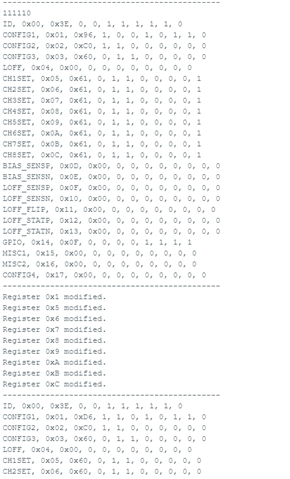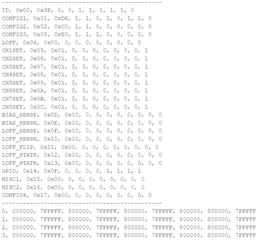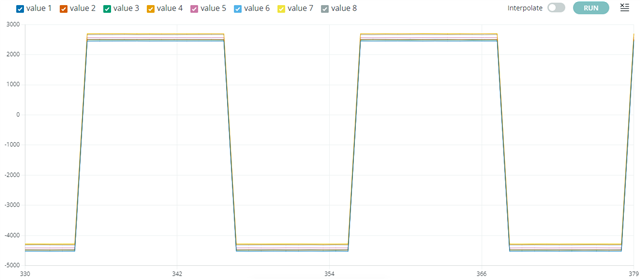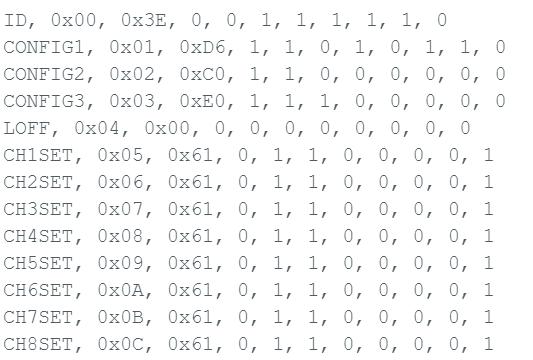Tool/software:
Hello,
I am trying to read the data from de ADS1299 using an Arduino board. I have achieved the communication between Arduino and ADS1299, since I can read and write in the registers as it is show in this picture:
The problem comes when reading the data from the IN channels, it gives the following values all the time:
As I understand, the values that I am obtaining are related to the maximum values, like saturating.
The code I am using in Arduino is the following:










